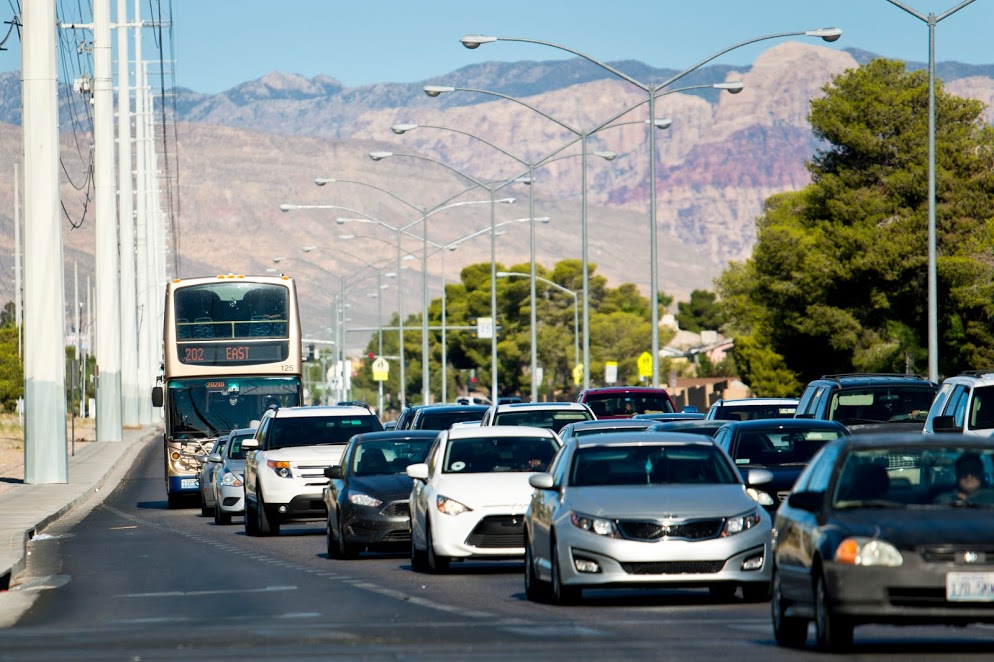Clark County disputes Las Vegas’s spot on the most polluted cities list, calling American Lung Association grading “arbitrary”

The American Lung Association’s annual air quality report ranked Las Vegas in the top 10 most polluted cities for ozone in the country and gave it “F” grades on its two key metrics — a finding that drew the ire of Clark County’s Department of Environment and Sustainability, which argued that air quality in the city continues to improve.
The American Lung Association’s 21st annual “State of the Air” report for 2020 ranked Las Vegas as the 9th worst city in the nation for ozone pollution. Clark County received a failing grade for ozone pollution, with the 2020 report showing more unhealthy days of high ozone than the 2019 report.
“Ozone pollution can harm even healthy people, but is particularly dangerous for children, older adults and people with lung diseases like COPD or asthma,” JoAnna Strother, the senior advocacy director of the American Lung Association in Nevada, said in a press release on Tuesday.
The association’s report covers data from 2016-2018 and also found that year-round particle pollution was higher in Las Vegas than it was in previous years.
The county stated in a preemptive press release on Monday that Clark County’s ozone pollution has been reduced by 12 percent since 2007 and that the U.S. Environmental Protection Agency (EPA) rates valley ozone levels as “good” or “moderate” 93.5 percent of the time.
“Anything below 99.2 percent is considered failing,” said Marci Henson, the director of the Department of Environment and Sustainability, referring to the American Lung Association’s report. “That doesn't make sense to us.”
The EPA puts out Air Quality Index ratings based on its National Ambient Air Quality Standards, and both the agency and the American Lung Association use those ratings for their reports.
While the EPA looks at the four highest days of ozone pollution, determining violations based on these results, the American Lung Association bases its grades on the average number of unhealthy air days based on the Air Quality Index.
If a county exceeds nine unhealthy air days on average for the year, it receives a failing grade. Clark County averaged 89 days per year. Washoe and Lyon counties also received failing grades for their ozone pollution levels, with 29 and 12 unhealthy air days, respectively.
Henson called the American Lung Association’s grading scale “arbitrary and subjective.” But even while she condemned the grade given by the report, she did say that reducing ozone pollution continues to be a struggle for the county, especially in summer months.
The association’s report showed that warmer temperatures can make ozone form more easily and makes it more difficult to clean. The three years covered in the 2020 report were among the five hottest recorded years in history.
The ongoing COVID-19 pandemic, and related shutdowns of non-essential businesses and schools that are reducing traffic, do appear to be making somewhat of a difference in Clark County’s air quality. While 2018 is the most recent year with “quality-assured” numbers, data from air quality monitoring stations in Clark County from March 2020 showed a slight reduction in ozone levels compared to March 2016-2019.
Henson said that even while the county disagrees with the grading methodology, both the American Lung Association and the Department of Environment and Sustainability have the same goal — reducing air pollution.
“Despite our disagreement with their report,” Henson said, “we will continue to build on our partnership at the local level to educate and inform our community about how we protect the air we share and also how individuals can protect it, too.”
